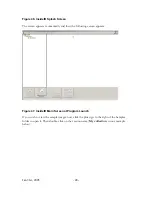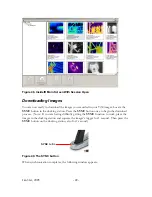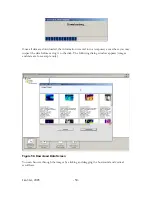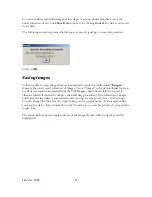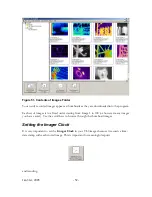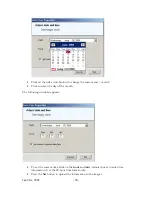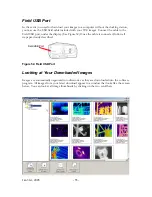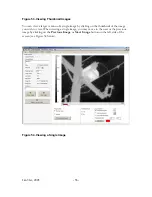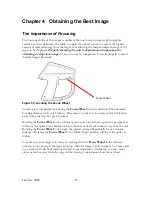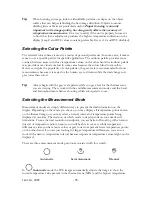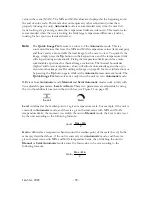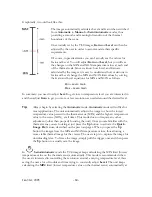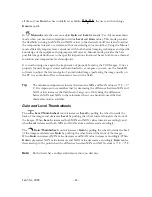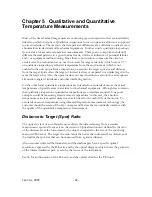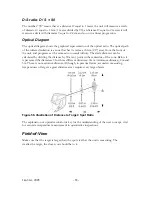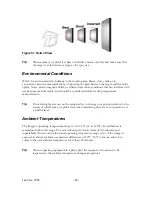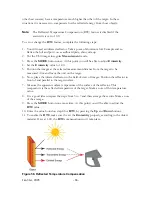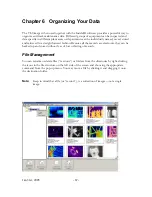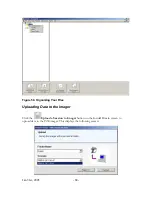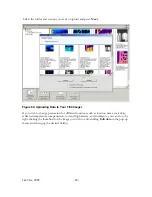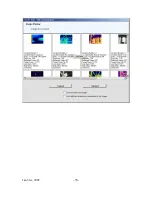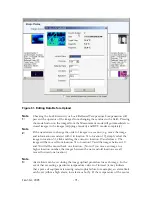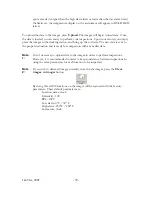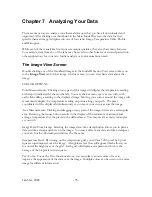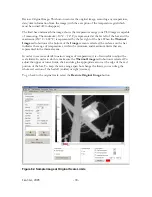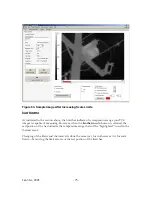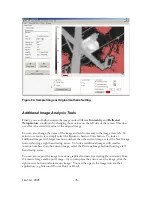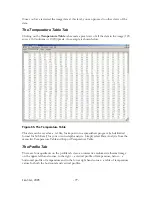
Chapter 5 Qualitative and Quantitative
Temperature Measurements
Most of the time thermal imager users are measuring
apparent temperatures
that are inextricably
linked to
qualitative inspections.
Qualitative inspections focus on
temperature differences
as opposed
to
actual temperatures
. The reason is that temperature differences are sufficient to indicate most
abnormalities in electrical and mechanical equipment. In other words, qualitative inspections
do not strive for accurate temperature measurements. Their goal is to capture and identify
different thermal patterns in a given thermal scene, which are indicative of potential failures
and / or equipment malfunctioning. Since there is no intention to measure the
actual
or
absolute value
, the technician has no need to correct for target emissivity (which is set at “1”
on qualitative inspections), reflected temperature from the environment (which is not
enabled in the unit on qualitative inspections) or account for target spot size and distance
from the target (quite often the target of interest is always compared to a similar target in the
same thermal scene). Also, the operator does not need to adjust or account for atmospheric
attenuation, angle of incidence and other interfering factors.
On the other hand, quantitative inspections are intended to accurately measure the actual
temperatures of specific areas in electrical or mechanical equipment. Although less common
than qualitative inspections, quantitative inspections are sometimes required. One good
example would be measuring electric motor temperatures: in this case, the absolute
temperature value is required since it is closely linked to the useful life of the motor. To
accurately measure temperature using infrared temperature measurement technology, the
customer should be aware of the key concepts and factors that can radically interfere with
the quality of the quantitative temperature measurement.
Distance to Target (Spot) Ratio
The optical system of an infrared sensor collects the infrared energy from a circular
measurement spot and focuses it on the detector. Optical resolution is defined by the ratio
of the distance from the instrument to the object, compared to the size of the spot being
measured (D:S ratio). The larger the ratio factor the better the instrument's resolution, and
the smaller the spot size that can be measured from a greater distance.
All non-contact infrared thermometers and thermal imagers have a specific optical
resolution, expressed by the D:S ratio and by the optical diagram, which shows the geometry
of the infrared radiation path as seen by the lenses of the instrument.
See 56 for an illustration of the D:S ratio and the optical chart for the Ti30 unit.
Jan 31st, 2005
- 62 -
Summary of Contents for Ti30
Page 4: ...Appendix B Infrared Theory Q A 92 Glossary 96 Jan 31st 2005 4 ...
Page 25: ...Man Machine Interface Flow Charts Main Loop Jan 31st 2005 25 ...
Page 26: ...Image Recording Procedure Emissivity Adjustment Procedure Jan 31st 2005 26 ...
Page 70: ...Jan 31st 2005 70 ...
Page 86: ...Jan 31st 2005 86 ...

